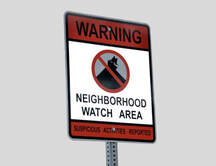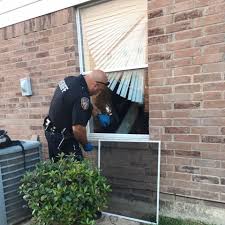Community Safety Data PortalThe Edmonton Police Service invites you to explore the Community Safety Data Portal! This interactive platform provides access to data including crime statistics and trends occurring in Edmonton. The goal of this interactive platform is to improve community awareness of policing activity and engage citizens in crime prevention strategies so that we can work in partnership to build safer communities.
Data is refreshed every day, with a 24-48 hour delay before it is published on the map. The occurrences had to have taken place within Edmonton and reported to EPS. To anonymize the location of the incident the point on the map is relocated to the closest intersection to where they occurred and should be considered approximate. Do not rely on any information viewed within the CSDP to make decisions or comparisons regarding the safety or crime levels for any particular area. |
Constables Corner |
Neighbourhood Empowerment Team
The resources here were developed by the Neighbourhood Empowerment Team based on community feedback and are designed to help people and businesses create safer neighbourhoods.
|
Neighbourhood Response Tool
This guide helps you make the right call at the right time. It informs you on what to do and who to call in case you witness a range of situations from vandalism, intoxication and substance abuse to property and business concerns. It also provides tangible steps to increase safety and minimize risk. |
Crime Prevention

Home Safety Tips
Below are a few simple and easy tips on how to increase the security of your home.
Doors
Fraud and Identity Theft
Scams and digital crime have been a reality for many years now, and arming yourself and your neighbours with the knowledge to avoid them can be just as important as protecting your homes from theft and vandalism.
Scams & Fraud
Below are a few simple and easy tips on how to increase the security of your home.
Doors
- Install security rated locks and deadbolts on all exterior doors. A good quality deadbolt lock should have a 2.5 cm (1 inch) throw. The strike plate should have at least two 8-10 cm (3 -4 inch) screws installed.
- Use the door locks. Keep doors locked even when at home.
- Exterior doors should be made of metal or solid wood. Glass or hollow core doors should be avoided.
- If your home has a glass panel within one meter of an exterior door, install a shatter resistant film on the glass or install security bars.
- Install a 180-degree door viewer.
- Never hide spare keys outside your home.
- Close and lock all windows when you are not at home.
- Consider replacing ordinary window glass with tempered, laminated, or wire-reinforced glass or with plastic.
- Install anti-lift, anti-slide devices on sliding aluminum frame windows.
- Keep windows and doors clear of all obstructions such as large bushes and shrubs.
- Basement windows are often an easy target. Security bars are a great visual deterrent. Or install anti-lift, anti-slide devices. Make sure that whatever device you use has a quick release mechanism in case of fire.
- Ensure your fence and gate are in good repair. Keep your gate locked at all times. Install privacy slats in chain link fences.
- Plant thorny plants under windows to deter intruders.
- Never leave ladders in your yard. These items could be used to reach the higher windows of your home.
- Use motion sensitive lights near doors or in dark areas of your yard.
- Eliminate hiding spots in your yard by trimming bushes and shrubs down to a height of 60 cm (2 feet). Trim up the lower branches of large trees to 1.5 m (5 feet).
- Cover the windows in your garage so people cannot look inside.
- Never leave your overhead garage door open. This gives individuals an opportunity to check out the contents of your garage.
- Install an indoor swinging, solid wood or metal door with a good quality deadbolt on the man door.
- Keep your garage locked at all times, especially if it is attached to your home.
- Never leave your automatic garage door opener in a vehicle that is parked outside your home.
- Lock your car even when it is in the garage.
Fraud and Identity Theft
Scams and digital crime have been a reality for many years now, and arming yourself and your neighbours with the knowledge to avoid them can be just as important as protecting your homes from theft and vandalism.
Scams & Fraud
- Never trust a deal or product that seems “too good to be true”
- Keep an eye on your credit card accounts, in case an unknown charge pops up
- Research any company that you want to start a subscription service or free trail with, or make purchases from. Keep an eye on negative reviews or accusations of scams
- Spelling mistakes and bad grammar are signs of a scam account
- Check the Terms & Conditions of any contract you sign. Look out for any cancellation fees or other hidden charges
- Remember that legitimate organizations will never ask for your personal information over text or email. This is a sure sign that someone is trying to scam you by impersonating that organization
- If a suspicious message has contact information attached, do not use it
- If an organization gives you a phone call or message that uses threatening language, it isn’t legitimate. Ignore it
- No legitimate government organization will ask you to make a payment through gift cards, prepaid credit cards, or Interac e-transfer
- If you suspect a scam, report it
- Create strong passwords and consider using two-factor authentication for any accounts that hold your personal information
- Do not use public computers or public Wi-Fi to access your personal information
- Do not give your personal information to anyone over the phone or online. If you must, make sure that the channel is secure and the recipient is trustworthy
- Make sure that any documents with your personal information are unreadable before throwing them out. Shred them or cross out important details with a black marker. Identity thieves are known to root through people’s garbage to find personal information
WHO TO CALL AND WHEN
- Imminent threat to people or property: Call 9-1-1
- Suspicious behaviour or crimes after the fact: phone, online, and app-based reporting lines
https://enwatch.ca/crime-reporting/ - Non-criminal person in distress: Call 2-1-1 to dispatch a 24/7 Crisis Diversion Team. https://www.reachedmonton.ca/detail/posts/Just-Call-211
- Properties suspected as base of criminal activity. Learn how to identify and report them: https://www.alberta.ca/report-suspicious-property.aspx
- Public or private properties that need attention due to damage, graffiti or neglect: Call 3-1-1 or use the new 311 Mobile app, which geotags pictures you send to the city with your complaint. https://www.edmonton.ca/city_government/initiatives_innovation/311-app.aspx
- Bike Index: Register your bikes, add an EPS QR-code sticker (available at local bike shops). If your bike goes missing, report it as stolen here as well as with EPS. EPS and the local cycling community will be better able to help get your bike back to you.
https://www.edmontonpolice.ca/CrimePrevention/HomePropertySafety/ProtectYourProperty/BikeIndex
- Edmonton Crime Severity Index
- Neighbourhood Crime Map (EPS)
- Edmonton Neighbourhood Watch Crime Prevention Tips
- Video: Secure your garage video:
- Check this page also for links to downloadable Home Security Quiz and Home Security Checklist.
- Walk Your Block Program







